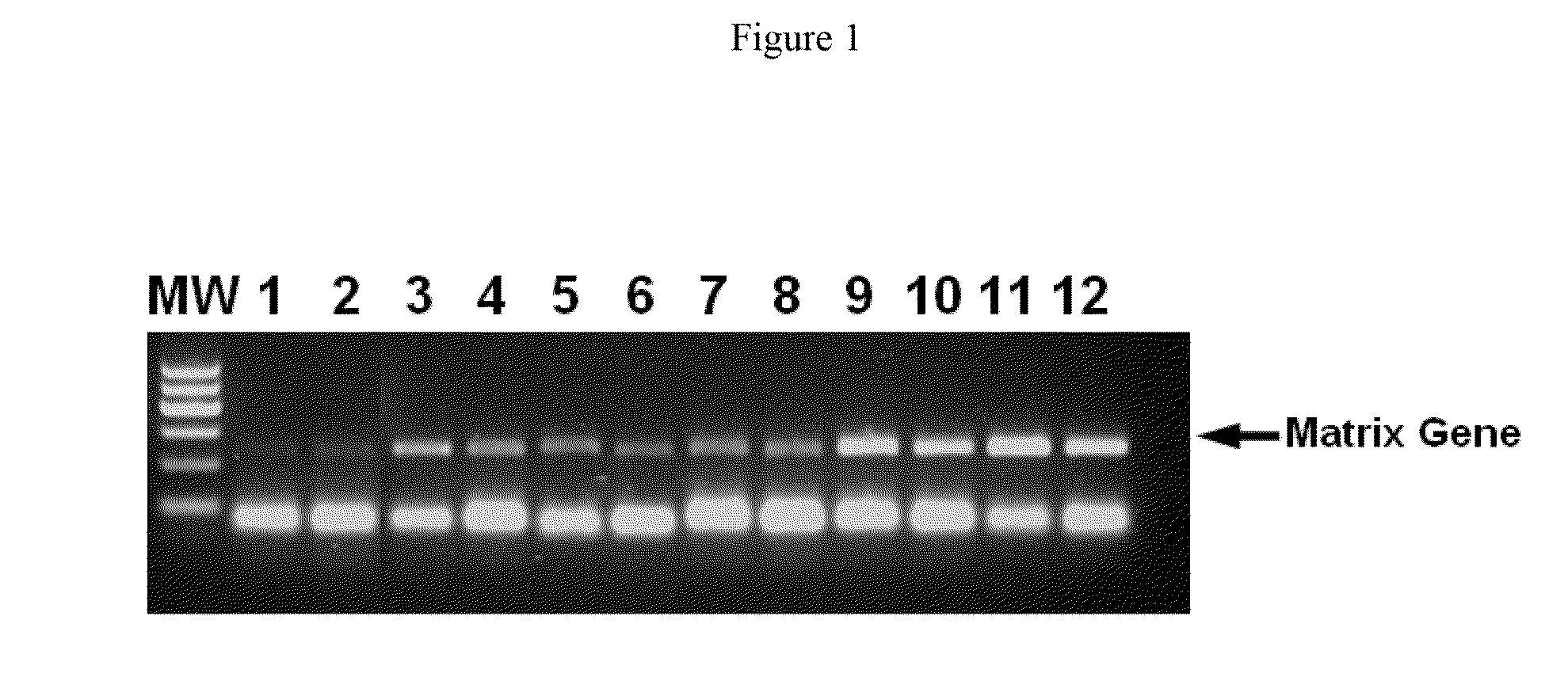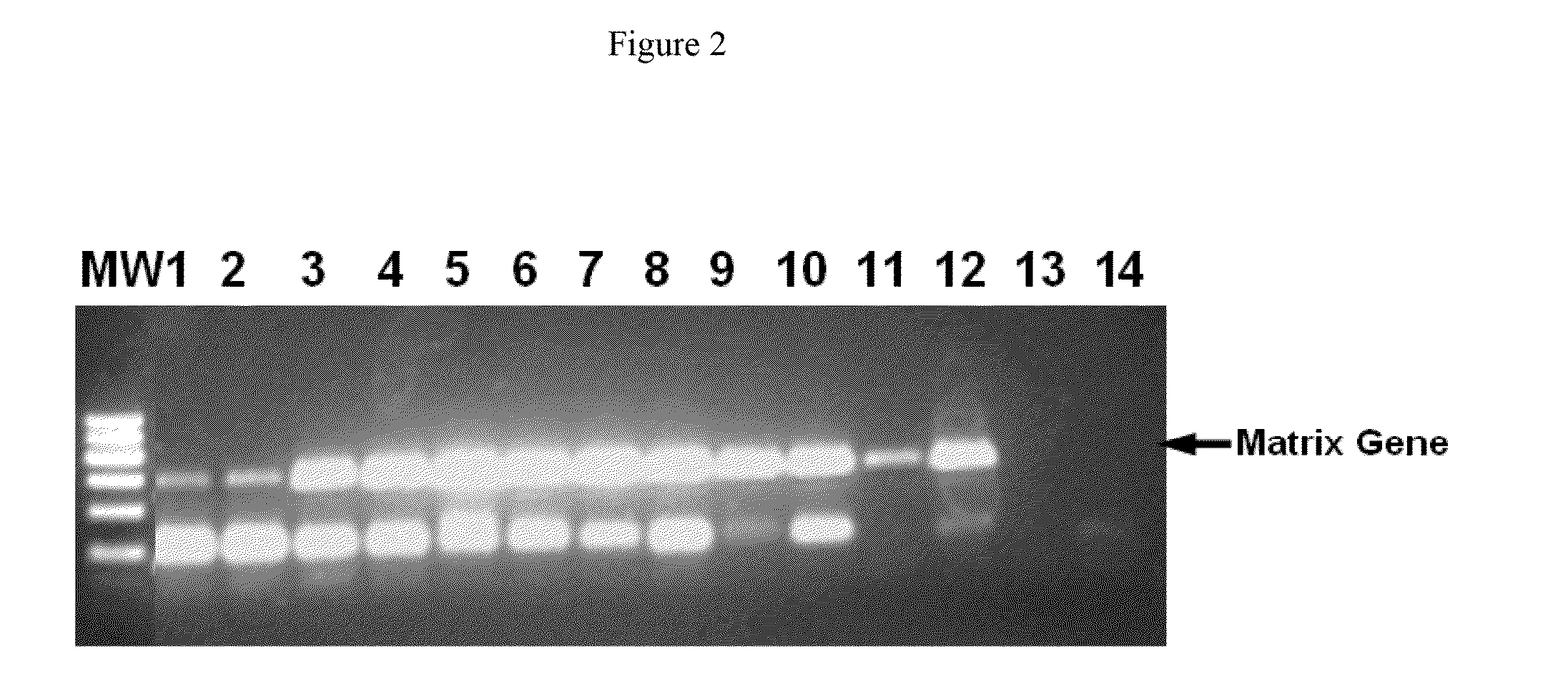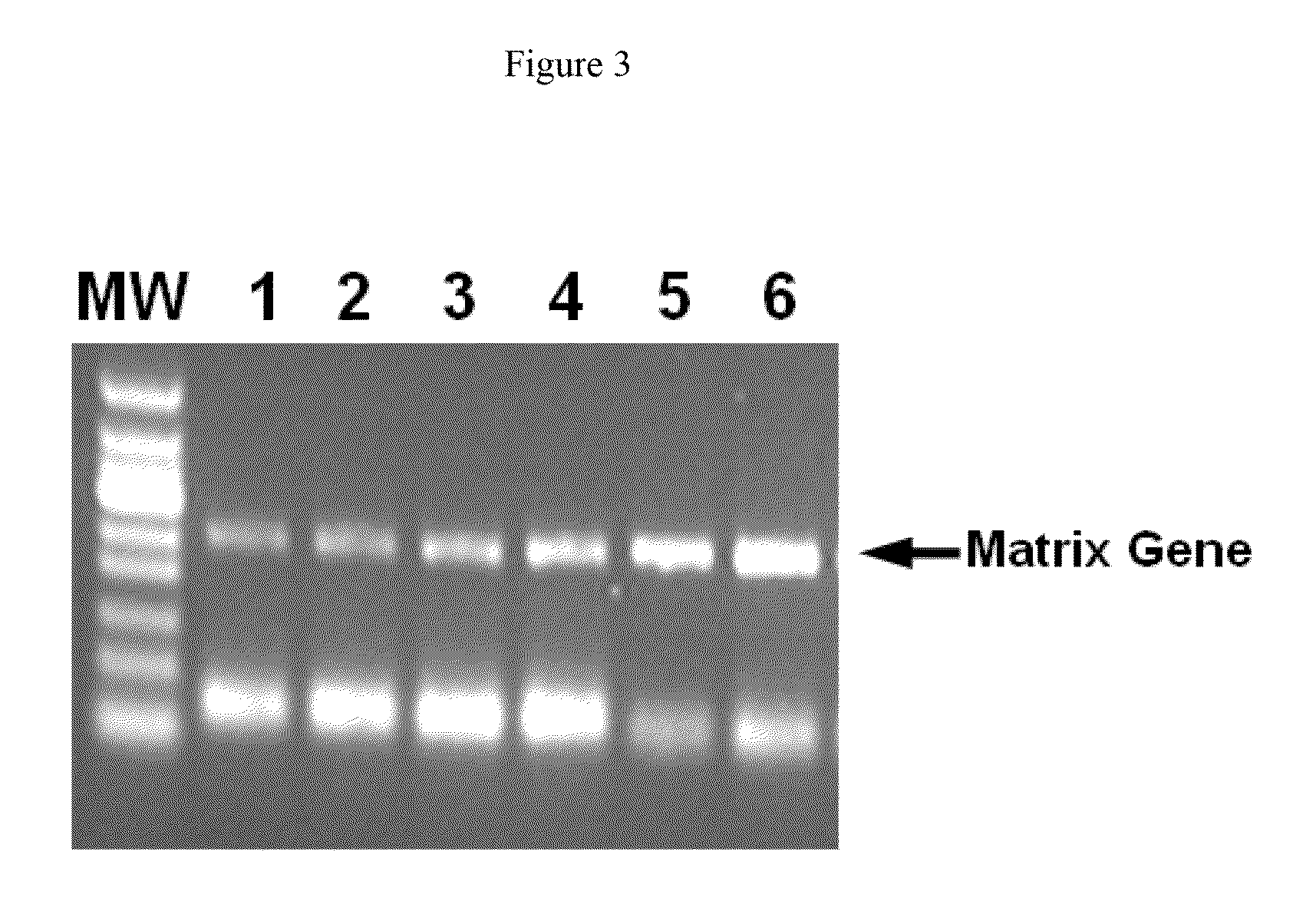Composition and methods for rt-pcr comprising an anionic polymer
a technology of anionic polymer and anionic polymer, which is applied in the field of molecular biology, can solve the problems of less sensitive low efficiency of single enzyme coupled rt-pcr method, etc., and achieves rapid and efficient generation of nucleic acid molecules, rapid production and amplification of cdnas, and easy synthesizing
- Summary
- Abstract
- Description
- Claims
- Application Information
AI Technical Summary
Benefits of technology
Problems solved by technology
Method used
Image
Examples
example 1
[0090]To demonstrate the specificity of RT-PCR is improved by the use of anionic polymers, increasing amounts of dextran sulphate 8000 (Sigma), were added to samples containing RNA from the influenza A virus. The matrix gene of the influenza A virus was selected as the RNA template for RT-PCR.
[0091]Viral RNA from the pandemic H1N1 / 09 virus, belonging to the group of influenza A viruses, was reacted in a final volume of 25 μl comprising 5 μl viral RNA eluate as template, reverse transcriptase (OmniScript, QIAGEN), 2.5 U of HotStar Fast Tag One-step RT-PCR buffer (QIAGEN) (1× final concentration) 0.4 mM each of dNTP mix, 0.6 μM each of forward (SEQ ID NO: 1) and reverse primer (SEQ ID NO: 2) for the matrix gene of influenza A virus and dextran sulphate at concentrations of 3.2 ng / ml to 640 ng / ml. The reverse transcription reaction mix was incubated at 50° C. for 30 minutes, followed by heating for 5 min at 95° C. After that, 45 cycles of 30 s at 94° C., 30 s at 50° C. and 1 min at 72°...
example 2
[0093]To determine whether dextran sulphate in higher concentrations could have a negative effect on the RT-PCR, higher concentrations of dextran sulphate were used. Reaction conditions were the same as described in Example 1, except for the concentration of dextran sulphate. The concentrations of dextran sulphate in this example were from 0.32 μg / ml to 16 μg / ml.
[0094]The samples were again analyzed on an agarose gel (FIG. 2). Again, a clear improvement in efficiency and specificity upon addition of dextran sulphate was observed (lanes 3-12) compared to the control in which no dextran sulphate was added (lanes 1-2). Only at very high concentrations of dextran sulphate (16 μg / ml) (lanes 13-14) a negative effect on the RT-PCR could be detected as this concentration failed to yield any product in RT-PCR. However, the positive effect of dextran sulphate on efficiency and specificity could be detected over a wide range of concentrations (0.32 μg / ml-6.4 μg / ml) (lanes 3-12), demonstrating ...
example 3
[0095]To determine whether the positive effect of anionic polymers on RT-PCR were on the reverse transcription, on the replication of the cDNA or on both, a two-step RT-PCR was performed with adding the anionic polymers at the reverse transcription step, at the replication step or not at all.
[0096]Template RNA and all other reaction components were the same as in Example 1. The reverse transcription reaction was incubated for 30 min at 50° C. After that, the reverse transcription was stopped by cooling the reaction on ice. An aliquot of the reverse transcription (12.5 μl) was mixed with a 12.5 μl PCR master mix, including 2.5 U HotStar Taq Plus (QIAGEN), 0.6 μM of the primers (SEQ ID NO: 1 and 2), 0.4 mM dNTP mix and 1× One-Step RT-PCR buffer (QIAGEN). PCR was conducted with the cycling conditions as shown in Example 1. Dextran sulphate 8000 (Sigma) was added either to the reverse transcription reaction or to the PCR reaction to give a final concentration of 480 ng / ml. In a control ...
PUM
| Property | Measurement | Unit |
|---|---|---|
| concentration | aaaaa | aaaaa |
| concentration | aaaaa | aaaaa |
| concentration | aaaaa | aaaaa |
Abstract
Description
Claims
Application Information
 Login to View More
Login to View More - R&D
- Intellectual Property
- Life Sciences
- Materials
- Tech Scout
- Unparalleled Data Quality
- Higher Quality Content
- 60% Fewer Hallucinations
Browse by: Latest US Patents, China's latest patents, Technical Efficacy Thesaurus, Application Domain, Technology Topic, Popular Technical Reports.
© 2025 PatSnap. All rights reserved.Legal|Privacy policy|Modern Slavery Act Transparency Statement|Sitemap|About US| Contact US: help@patsnap.com



